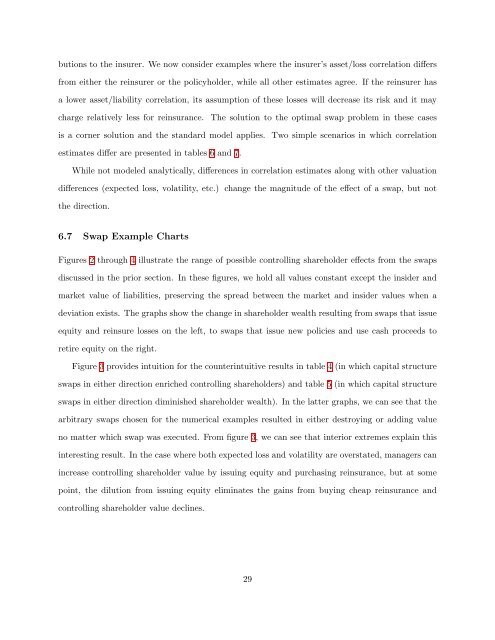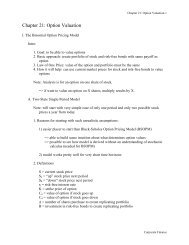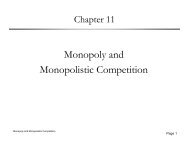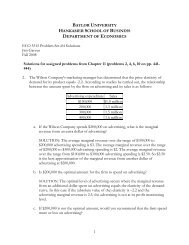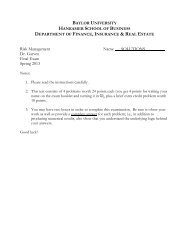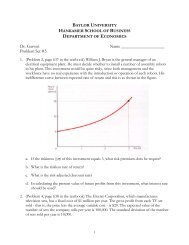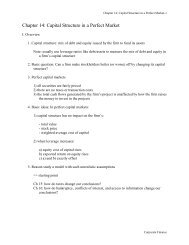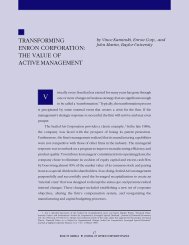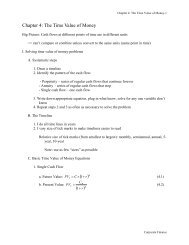Insurance Company Capital Structure Swaps and Shareholder Wealth
Insurance Company Capital Structure Swaps and Shareholder Wealth
Insurance Company Capital Structure Swaps and Shareholder Wealth
You also want an ePaper? Increase the reach of your titles
YUMPU automatically turns print PDFs into web optimized ePapers that Google loves.
utions to the insurer. We now consider examples where the insurer’s asset/loss correlation differs<br />
from either the reinsurer or the policyholder, while all other estimates agree. If the reinsurer has<br />
a lower asset/liability correlation, its assumption of these losses will decrease its risk <strong>and</strong> it may<br />
charge relatively less for reinsurance. The solution to the optimal swap problem in these cases<br />
is a corner solution <strong>and</strong> the st<strong>and</strong>ard model applies. Two simple scenarios in which correlation<br />
estimates differ are presented in tables 6 <strong>and</strong> 7.<br />
While not modeled analytically, differences in correlation estimates along with other valuation<br />
differences (expected loss, volatility, etc.) change the magnitude of the effect of a swap, but not<br />
the direction.<br />
6.7 Swap Example Charts<br />
Figures 2 through 4 illustrate the range of possible controlling shareholder effects from the swaps<br />
discussed in the prior section. In these figures, we hold all values constant except the insider <strong>and</strong><br />
market value of liabilities, preserving the spread between the market <strong>and</strong> insider values when a<br />
deviation exists. The graphs show the change in shareholder wealth resulting from swaps that issue<br />
equity <strong>and</strong> reinsure losses on the left, to swaps that issue new policies <strong>and</strong> use cash proceeds to<br />
retire equity on the right.<br />
Figure 3 provides intuition for the counterintuitive results in table 4 (in which capital structure<br />
swaps in either direction enriched controlling shareholders) <strong>and</strong> table 5 (in which capital structure<br />
swaps in either direction diminished shareholder wealth). In the latter graphs, we can see that the<br />
arbitrary swaps chosen for the numerical examples resulted in either destroying or adding value<br />
no matter which swap was executed. From figure 3, we can see that interior extremes explain this<br />
interesting result. In the case where both expected loss <strong>and</strong> volatility are overstated, managers can<br />
increase controlling shareholder value by issuing equity <strong>and</strong> purchasing reinsurance, but at some<br />
point, the dilution from issuing equity eliminates the gains from buying cheap reinsurance <strong>and</strong><br />
controlling shareholder value declines.<br />
29


